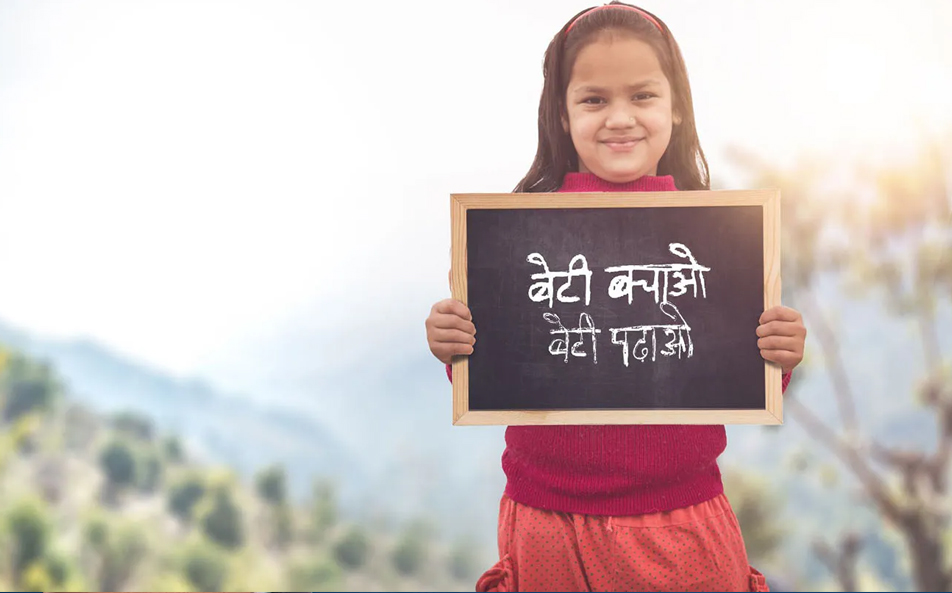The Beti Bachao Beti Padhao (BBBP) campaign, launched by the Government of India on 22nd January 2015, has become one of the most significant national initiatives to address gender imbalance and promote the welfare of the girl child. This flagship program aims to prevent gender-biased sex-selective practices, ensure the survival and protection of girls, and encourage their education.
As the campaign marks its 10th anniversary in 2025, it is crucial to reflect on its achievements, challenges, and the way forward to ensure gender equity in India.
Why Was the BBBP Campaign Launched?
India has long struggled with skewed sex ratios due to societal biases and cultural preferences for male children. According to the Census of 2011, the Child Sex Ratio (CSR) was alarmingly low at 918 girls per 1,000 boys, marking a steady decline from 927 in 2001. Practices such as sex-selective abortions and the undervaluation of girls in some communities contributed to this disparity. Additionally, low female literacy rates and high dropout rates among girls in schools further exacerbated gender inequality.
The Beti Bachao Beti Padhao Campaign was introduced as a multi-sectoral initiative with the following key objectives:
- Preventing gender-biased sex selection.
- Ensuring the survival and protection of girls.
- Promoting education and participation of girls.
Key Features of the Beti Bachao Beti Padhao Campaign
- Advocacy and Awareness: Massive awareness campaigns have been conducted to change societal attitudes toward girls. Messages like "A daughter is a blessing" have been widely disseminated through print, television, and social media platforms.
- Convergence of Schemes: The campaign integrates efforts from the Ministry of Women and Child Development (MWCD), Ministry of Health and Family Welfare (MoHFW), and Ministry of Education to address the issue holistically.
- District-Level Implementation: The scheme focuses on 100 critical districts with low child sex ratios in its initial phase, later expanding to cover all districts in India.
- Financial Incentives: Several state governments introduced financial schemes like Sukanya Samriddhi Yojana to encourage parents to save for their daughters’ education and marriage.
Achievements of the Beti Padhao, Beti Bachao Campaign
- Improvement in Child Sex Ratio (CSR): According to government data, CSR in several districts has shown improvement. For instance, in Haryana, one of the worst-affected states, CSR increased from 834 in 2015 to 920 in 2020.
- Increased Enrolment of Girls in Schools: The Gross Enrolment Ratio (GER) for girls in secondary education improved significantly. Data from 2020-21 shows that GER for girls increased to 81.32% compared to 78% in 2014.
- Reduction in Dropout Rates: Dropout rates among girls decreased by 12% over the past decade due to targeted efforts like the provision of separate toilets in schools and scholarship programs.
- Empowering Girls Through Skill Development: Several states launched vocational training programs for girls under the BBBP initiative, helping them secure better economic opportunities.
10 Years of Beti Bachao Beti Padhao : Reflecting on a Decade of Progress
The year 2025 marks a decade since the inception of the Beti Bachao Beti Padhao campaign. Over the past ten years, the initiative has emerged as a symbol of hope and progress for millions of girls and their families.
- Enhanced Awareness: The campaign has successfully changed perceptions in many communities where daughters were once considered a burden.
- Grassroots Impact: Programs like village-level celebrations of girl child births and initiatives like "Guddi-Gudda Boards" have fostered community-level engagement.
- Legislative Backing: Strengthening laws like the Pre-Conception and Pre-Natal Diagnostic Techniques (PCPNDT) Act, 1994, has reinforced the campaign’s objectives.
Despite these achievements, challenges remain. For instance, while CSR has improved in many regions, disparities persist in some states. Moreover, ensuring quality education and safety for girls continues to be a work in progress.
Challenges Faced by the BBBP Campaign
- Cultural Barriers: Deeply entrenched patriarchal norms continue to impede progress in some regions, where preference for sons remains a strong bias.
- Implementation Gaps: Uneven implementation of the campaign across states and districts has limited its effectiveness in certain areas.
- Safety Concerns: Rising instances of gender-based violence pose significant threats to the safety and education of girls.
- Funding Issues: Reports indicate that allocated funds are often underutilized or mismanaged, affecting grassroots-level outcomes.
The Role of Society in BBBP’s Success
The Beti Bachao Beti Padhao Campaign cannot succeed without collective societal efforts. The active participation of families, educators, and community leaders is crucial to fostering an environment where girls can thrive. Success stories like that of Geeta Phogat, India’s first female wrestler to qualify for the Olympics, highlight how empowering girls can lead to national pride and progress.
Steps to Strengthen BBBP in the Future
- Enhancing Education Opportunities: Increase investments in girl’s education, particularly in rural areas, with a focus on STEM (Science, Technology, Engineering, Mathematics).
- Ensuring Safety and Security: Strengthen measures to combat gender-based violence by implementing stricter laws and raising awareness about legal rights.
- Community Participation: Encourage community-driven programs that celebrate daughters and address gender biases at the grassroots level.
- Monitoring and Evaluation: Regular audits and third-party evaluations of the campaign’s implementation can ensure transparency and accountability.
- Promoting Role Models: Highlighting success stories of women from diverse fields can inspire more families to invest in their daughters’ futures.
Conclusion
The Beti Bachao Beti Padhao Campaign has been a transformative initiative, making significant strides in improving the status of girls in India. As it celebrates a decade of implementation, it stands as a testament to the power of government and societal collaboration in addressing critical issues like gender inequality. However, the journey is far from over. Ensuring the survival, safety, and empowerment of girls requires sustained efforts, innovative strategies, and a collective will to break down barriers.
By continuing to invest in the education and empowerment of girls, India is not just uplifting its daughters but also shaping a brighter, more equitable future for all. Let the next decade of BBBP be a beacon of hope and progress, ensuring that every girl child in India receives the love, respect, and opportunities she deserves.



